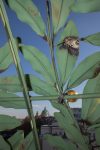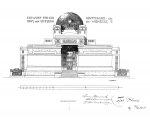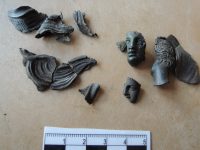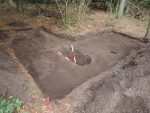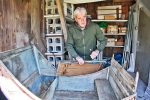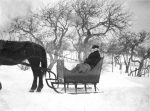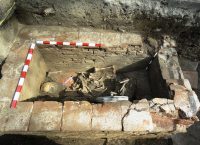 When a Roman tomb was discovered in a courtyard behind the Rector’s office at the Medical University of Plovdiv in Bulgaria at the end of March, one of the more curious items found within was the shell of a tortoise next to the head of one of the individuals buried in the grave. Now the shell of a second tortoise has been found in the tomb, a unique discovery in Bulgarian archaeology.
When a Roman tomb was discovered in a courtyard behind the Rector’s office at the Medical University of Plovdiv in Bulgaria at the end of March, one of the more curious items found within was the shell of a tortoise next to the head of one of the individuals buried in the grave. Now the shell of a second tortoise has been found in the tomb, a unique discovery in Bulgarian archaeology.
“[The second tortoise in the Roman tomb] is smaller [than the first one], and [its remains] are not so well preserved,” [Plovdiv University archaeologist Zdravka] Kortukova has told local news and culture site Plovdiv Time, emphasizing that the tortoise tomb find is the first such archaeological discovery in Bulgaria.
“In the perceptions of our ancient predecessors, the tortoise is connected with god Hermes in his chthonic (underworld) aspect,” says in turn [Plovdiv Museum of Archaeology archaeologist Maya] Martinova.
“Some researchers think that the depictions of Hermes with a tortoise in his hand is connected with the belief that the dead tortoise, not unlike the deceased [human]’s soul, moved to the afterlife,” she elaborates.
“That is, the tortoise is directly connected with Hermes Psychopompos and the immortality of the soul,” stresses the archaeologist.
She has referred to one of ancient deity Hermes’ functions in (Ancient Greek but also Thracian and Roman) mythology, namely, that of a psychopomp, a conveyor or conductor of souls who escorts newly deceased souls from the Earth to the afterlife.
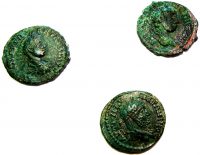 The discovery of coins inside the grave narrow the burial date down to the 3rd century. The coins were mined in Philipopolis (the ancient name for Plovdiv) and Traianopolis (modern-day Alexandroupoli Municipality in Northeast Greece) and date to the reigns of the Emperor Caracalla (r. 198-217 A.D.) and Elagabalus (r. 218-222 A.D.).
The discovery of coins inside the grave narrow the burial date down to the 3rd century. The coins were mined in Philipopolis (the ancient name for Plovdiv) and Traianopolis (modern-day Alexandroupoli Municipality in Northeast Greece) and date to the reigns of the Emperor Caracalla (r. 198-217 A.D.) and Elagabalus (r. 218-222 A.D.).
As the Medical University is located over one of four burial grounds known to have dotted the outer perimeter of the ancient city, the discovery of a Roman tomb from this period was not surprising, but its excellent condition is.
“The grave which we have unearthed this year is of the most widespread type of burial facility – a grave of brick masonry with a flat lid, in this case made of flat gneiss slabs. It is oriented north – south, with a little deviation to the northeast. On the bottom [of the tomb], there was a “pillow” made of tilted bricks,” Martinova reveals.
“Our first impression was that the grave had not been opened but after we expanded the research spot, and unearthed the entire facility, it turned out that the lid had been compromised in the southern section, so someone had been here before us. This probably happened back in the Antiquity,” she adds.
The bones of two adults and one child about 10-11 years of age were found in the grave. Archaeologists believe they were a family, but that cannot be conclusively confirmed short of successful extraction and analysis of DNA.



